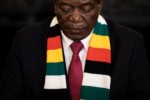The Meeting of China’s and South Korea’s Foreign Ministers — Political Background and Perspective of the China–Japan–South Korea summit
On May 13-14, 2024, the Minister of Foreign Affairs of the Republic of Korea Cho Tae-yul came with an official visit to China, the first such visit in six years. The main event during this trip was his talks with Wang Yi, his Chinese counterpart. The guest also had a meeting with representatives of Chinese business circles and South Korean businessmen operating in China.
This visit is noteworthy, if only because it was one of the few events that (with a considerable stretch, but still) can be characterized as positive in the stream of negativity accompanying the development of political processes in the world as a whole and specifically in the Indo-Pacific region. This was further evidenced by the ambiguity of the wording in the official commentary on this visit on the long-discussed topic of holding the China–Japan–South Korea trilateral summit. This summit was last held as far back as December 2019.
What prevents China–Japan–South Korea integration
Meanwhile, this topic was the focus of a meeting of the Foreign Ministers of the three countries held six months earlier at Busan, South Korea. And even the date (late May) of the expected Summit was more or less certain a month or two ago. But, pursuant to the same commentary, during the negotiations held in Beijing, an agreement was reached only with respect to holding (also “at the end of May”) some trilateral business forum in Seoul. With regard to the Summit only the readiness of the Republic of Korea to provide it with organizer services was mentioned.
It should be noted that the very fact of the gradual (since the late 1990s) formation of the “China–Japan–South Korea” platform fit into the generally positive mood of the 2000s (and early 2010s) on the prospects for the development of the global political puzzle, whose focus already began to move to the Indo-Pacific region. However, at the turn of the 2020s, processes of such a negative nature have emerged that nowadays those previous sentiments are merely remembered “like a dream of times that never were.” In particular, the representation of the People’s Republic of China at the 2019 Summit by the then Prime Minister, rather than Chinese President Xi Jinping, was viewed as an alarming sign.
In the past six months alone, since the Busan meeting mentioned above, a number of events were held in the IPR that have contributed to further aggravation of the situation in the region as a whole and in the........
© New Eastern Outlook






















 Toi Staff
Toi Staff Gideon Levy
Gideon Levy Belen Fernandez
Belen Fernandez Andrew Mitrovica
Andrew Mitrovica Rachel Marsden
Rachel Marsden Tarik Cyril Amar
Tarik Cyril Amar Warren J. Blumenfeld
Warren J. Blumenfeld Dr Ramzy Baroud
Dr Ramzy Baroud Tafi Mhaka
Tafi Mhaka Adam Makary
Adam Makary
